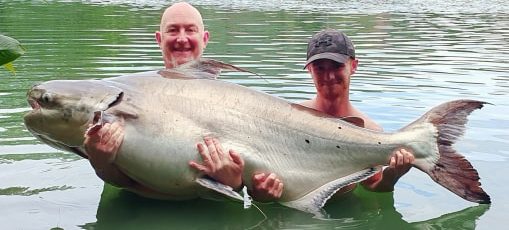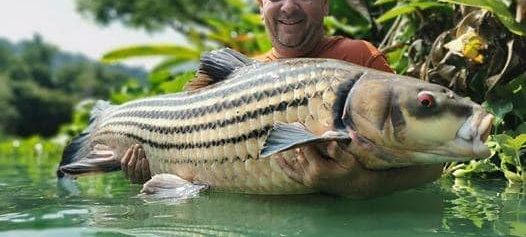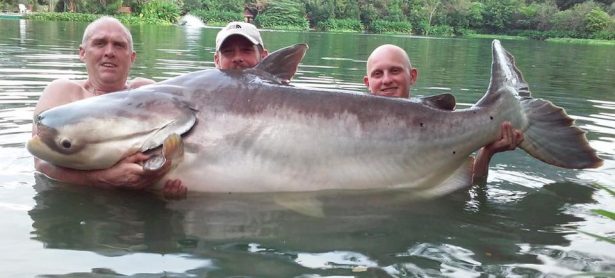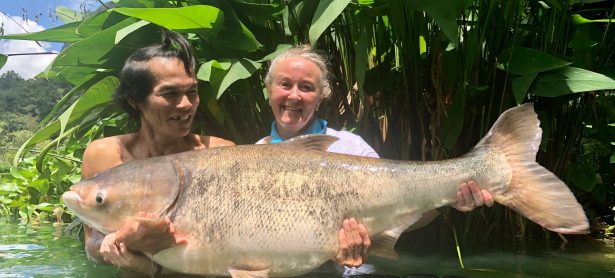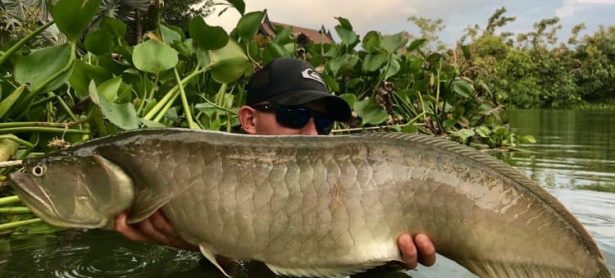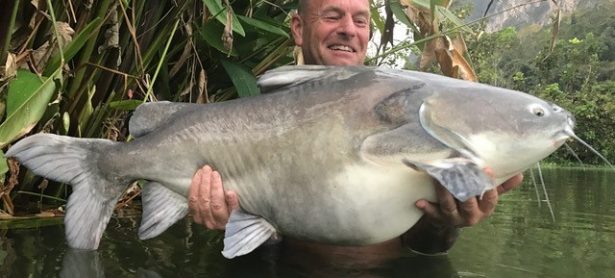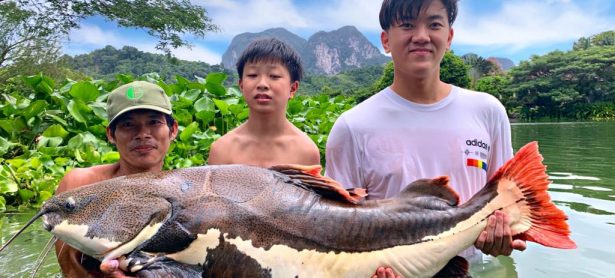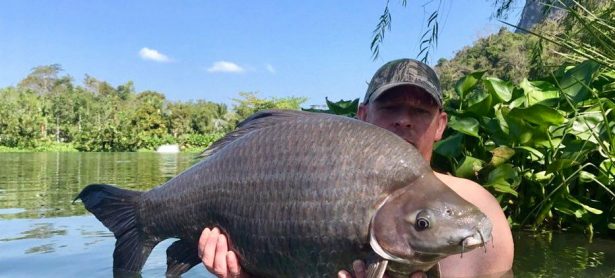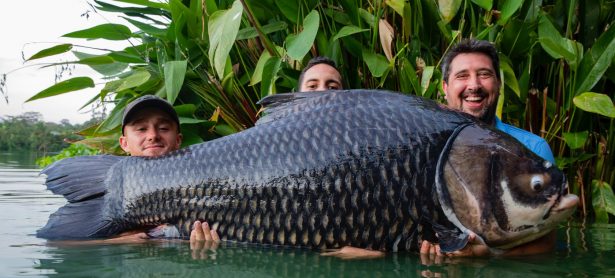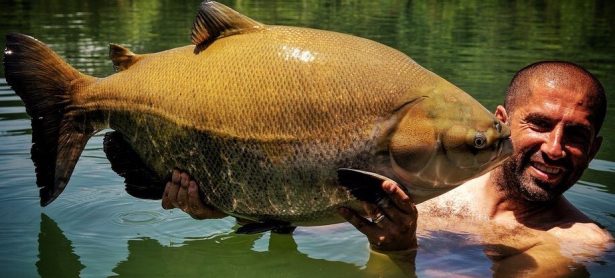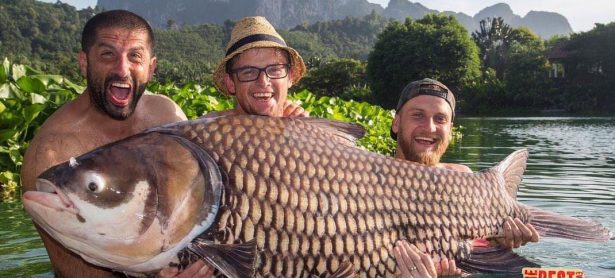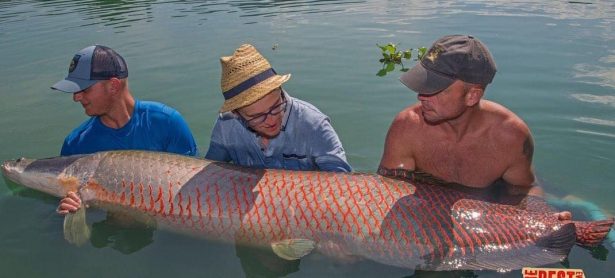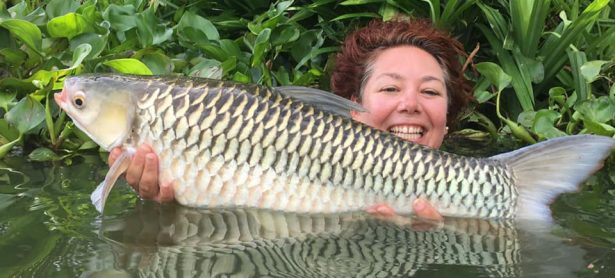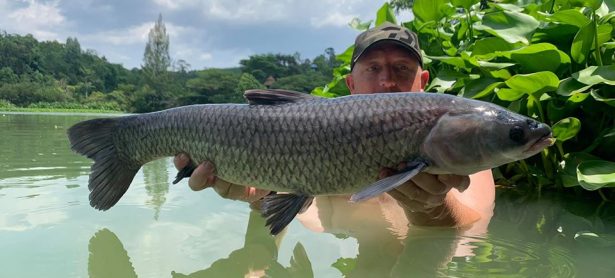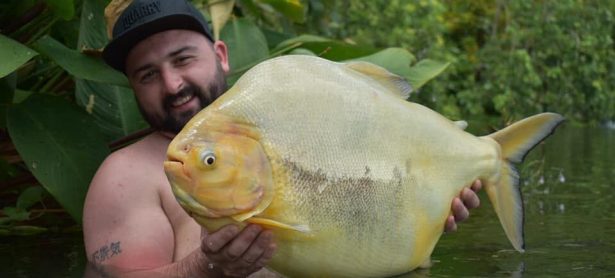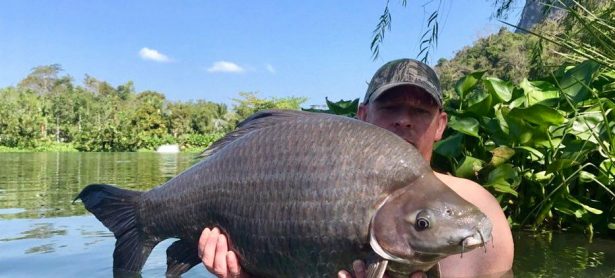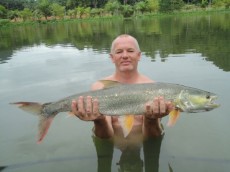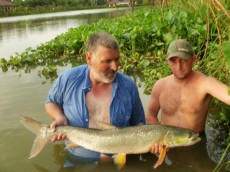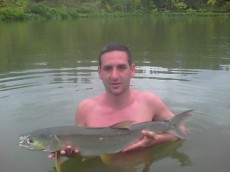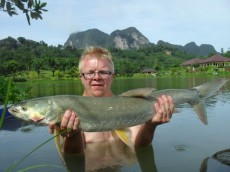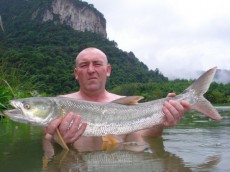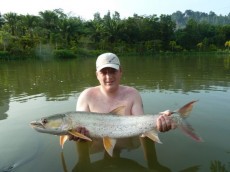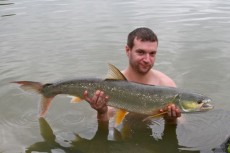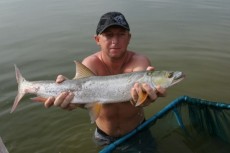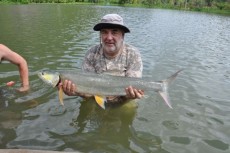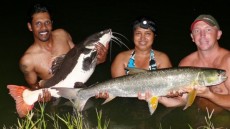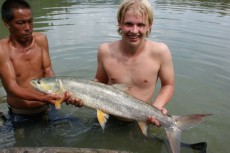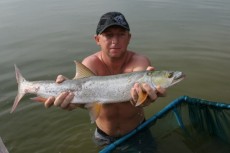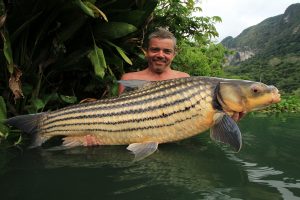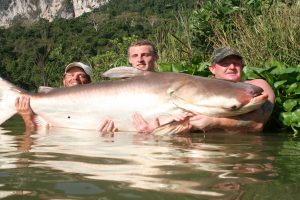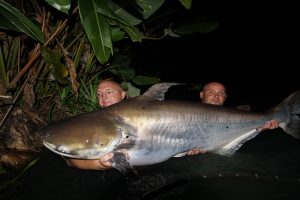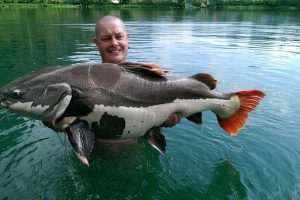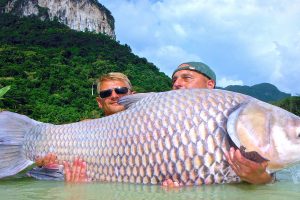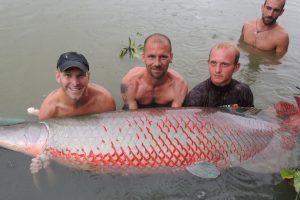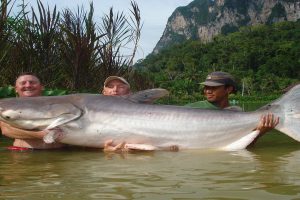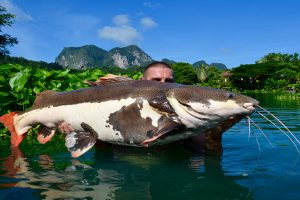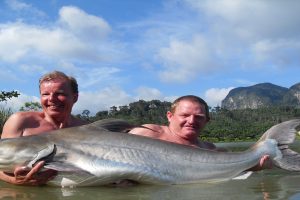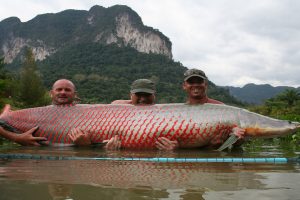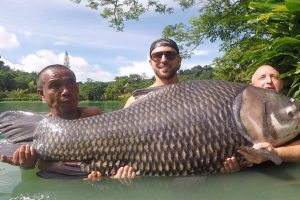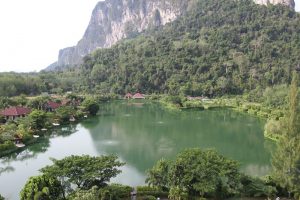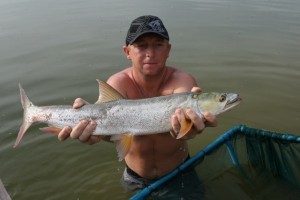 Name: Chinese seerfish.
Name: Chinese seerfish.
Other name: Yellowcheck carp.
Species: Scomberomorus munroi. (Elopichthys bambusa)
Thai name: Pla bambusa.
Max length: 3m.
Max weight: 200kg.
IGFA record: 131kg (288lb 12oz).
Diet: fish, frogs, and waterfowl.
The seerfish is another new species to Gillhams; we have been trying to obtain these rare predators ever since we came to Thailand and noticed them in aquariums. We finally located some and introduced them in September 2010. Unfortunately we cannot really give an accurate idea of how to target them, as very little is known about fishing for them as they are so rare, but from what information we can find, in the wild they are targeted with fish baits fished high in the water under a float, or with live frogs. They would obviously take spinners and lures, but unfortunately these are banned at Gillhams as our arapaima swallow lures and die. Live bait would also be an option, but to stop the spread of disease from cast off injured fish these are also banned here.
Time is going to tell how to target these fish, but as they prefer the upper layers of the lake and are very visual, so probably casting dead baits under a small float to them would be the best way to target them. Even casting a fry pattern fly to them could be successful, and at their present size a 10wt outfit would be ample, but as they are fast growers, within a couple of years hopefully they will need 12wt outfits! Being an upper water species, a floating line will be needed, and you would also need a short heavy mono trace from the fly due to the seerfish having very sharp teeth. We have been tossing dead sea fish to them; they take these at incredible speeds, and we are sure they are going to make a great sport fish for our anglers. If you are fortunate enough to catch one please handle them as little as possible, have your camera at the ready and take a very quick picture.
General facts on the Chinese seerfish:
The seerfish are classed code red on the endangered species list, as only small pockets of them are left in the wild in China, Japan, Vietnam and Cambodia. There are also reports of them being caught in the oceans of the Western Pacific yellow sea and the sea of Japan. Their environment is described as freshwater, brackish and marine. It is believed that a few wild fish could be left in the Mekong river in Thailand, but none have been recorded for twenty years. The seerfish has a slight resemblance to a salmon, with similar silver coloring and scales, although the seerfish is also called a yellowchek carp it is not a member of the carp species. They have a vicious set of teeth used to slash their prey in half. The seerfish are only believed to spawn in the ocean, but prefer freshwater to live in for the rest of the time.
The damming and destruction to the Mekong River has severely restricted their migration, and they have been known to travel 300km from the waters above Phnom Phen, Cambodia, to the ocean to spawn. Returning after spawning to their preferred freshwater feeding grounds, juveniles have the ability to return to the same waters as the adult fish that spawned them. Due to their migratory routes being destroyed and being a highly prized food fish in Japan, where they are salted and smoked then pan fried or baked. Their numbers in the wild are declining at such a rapid rate that wild fish could soon disappear completely, leaving their only chance of survival to being artificially spawned for the Asian aquarium trade. The seerfish here at Gillhams have not been taken from the wild; they are fish that outgrew an aquarium of a private collector.



